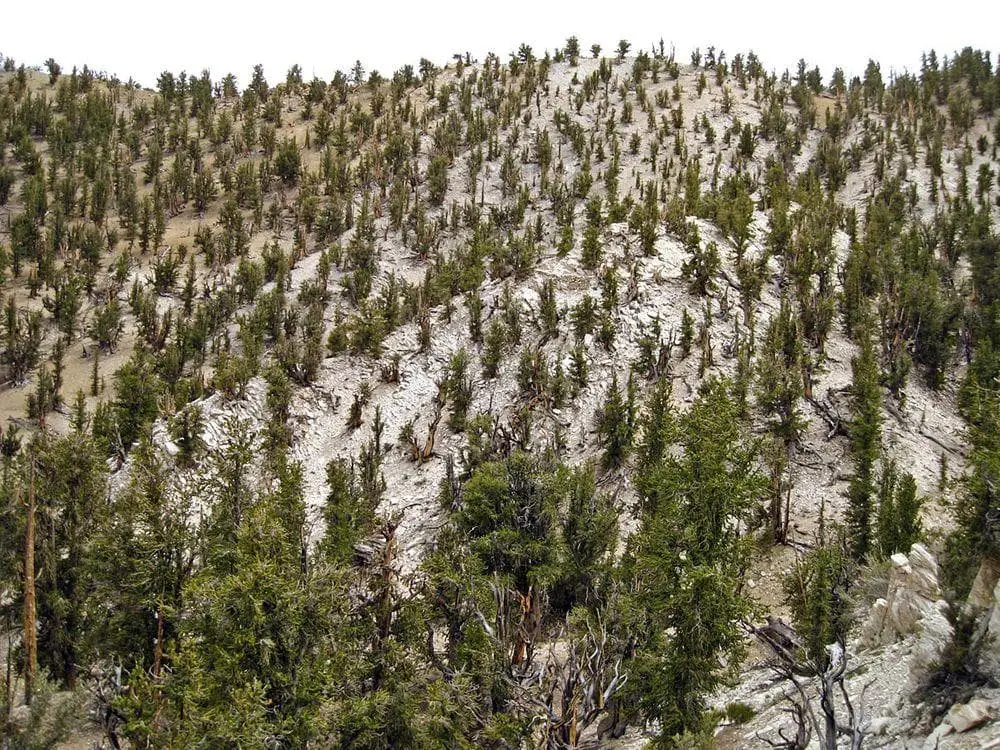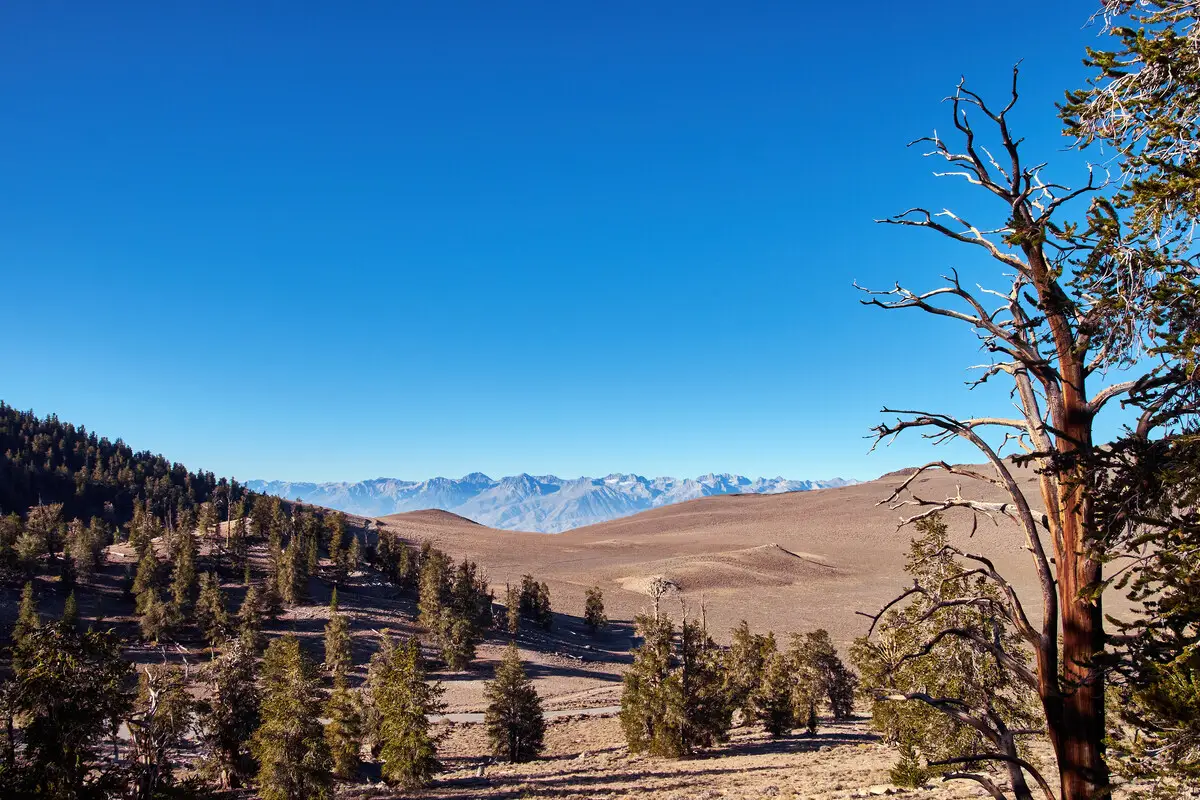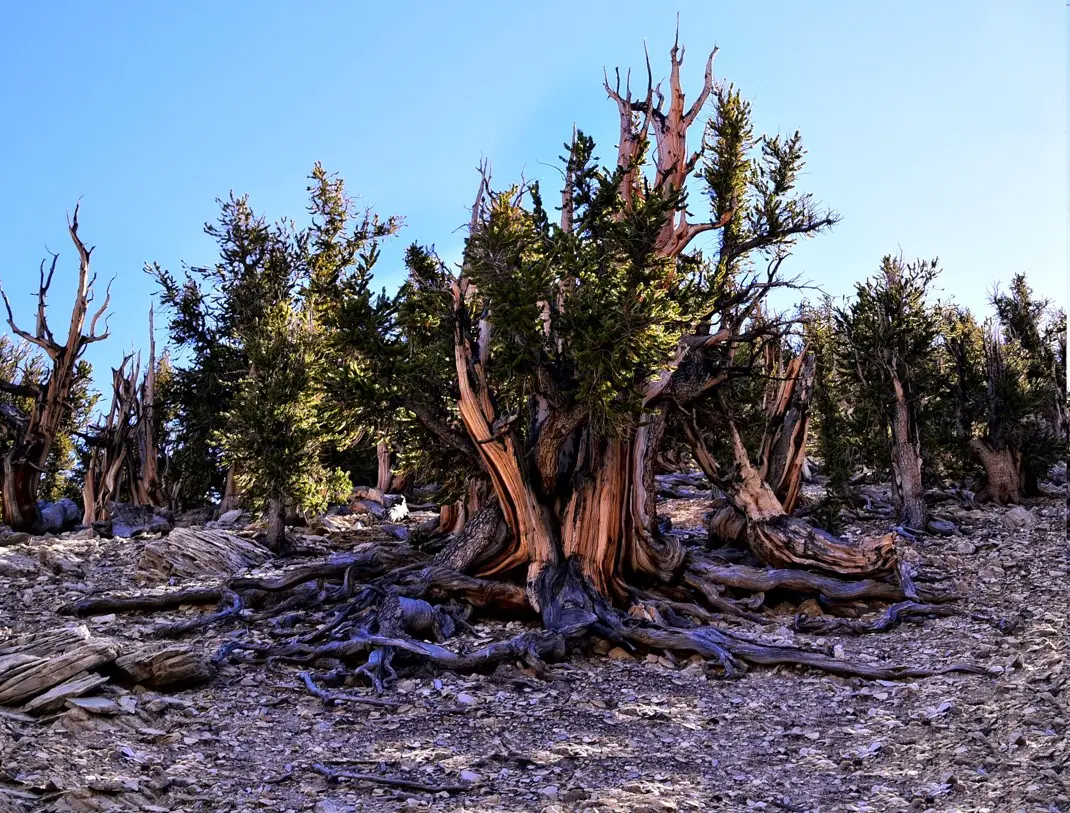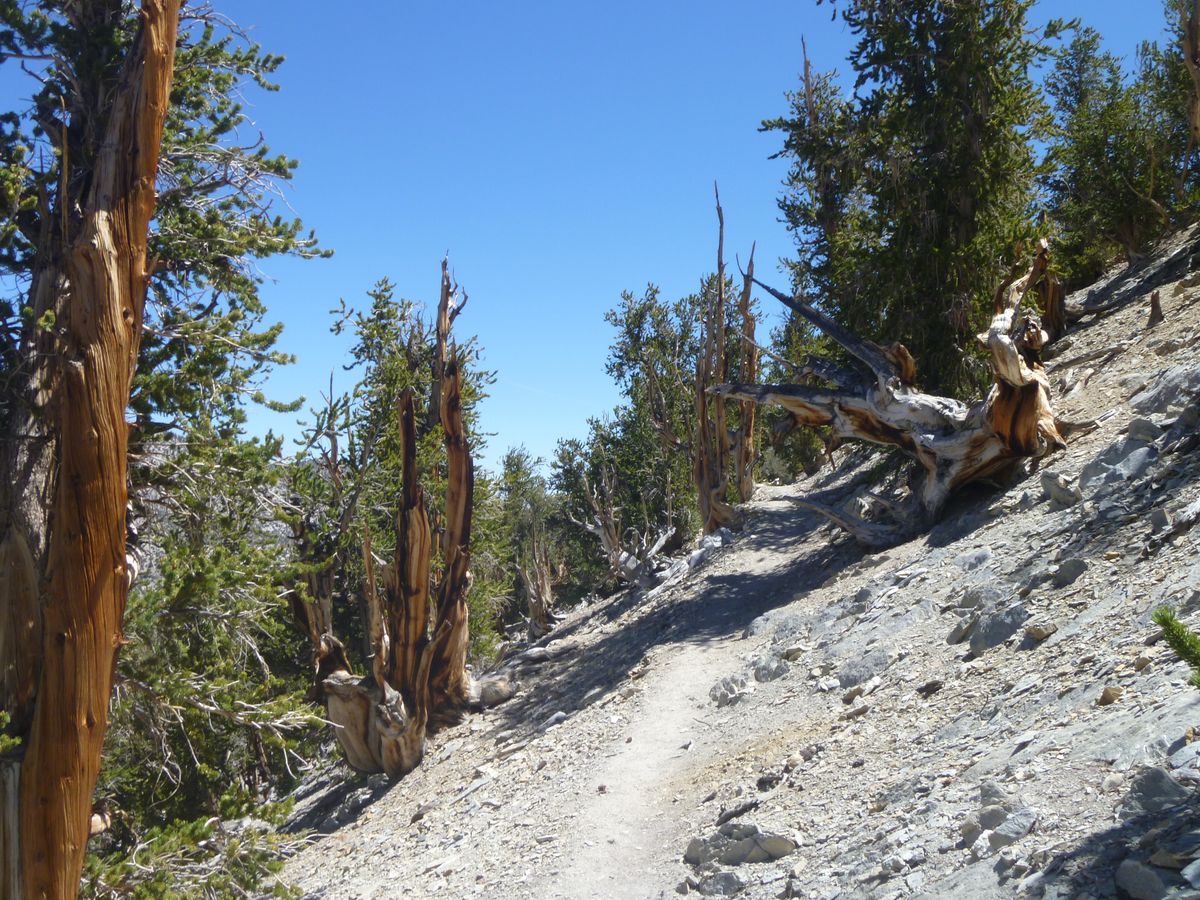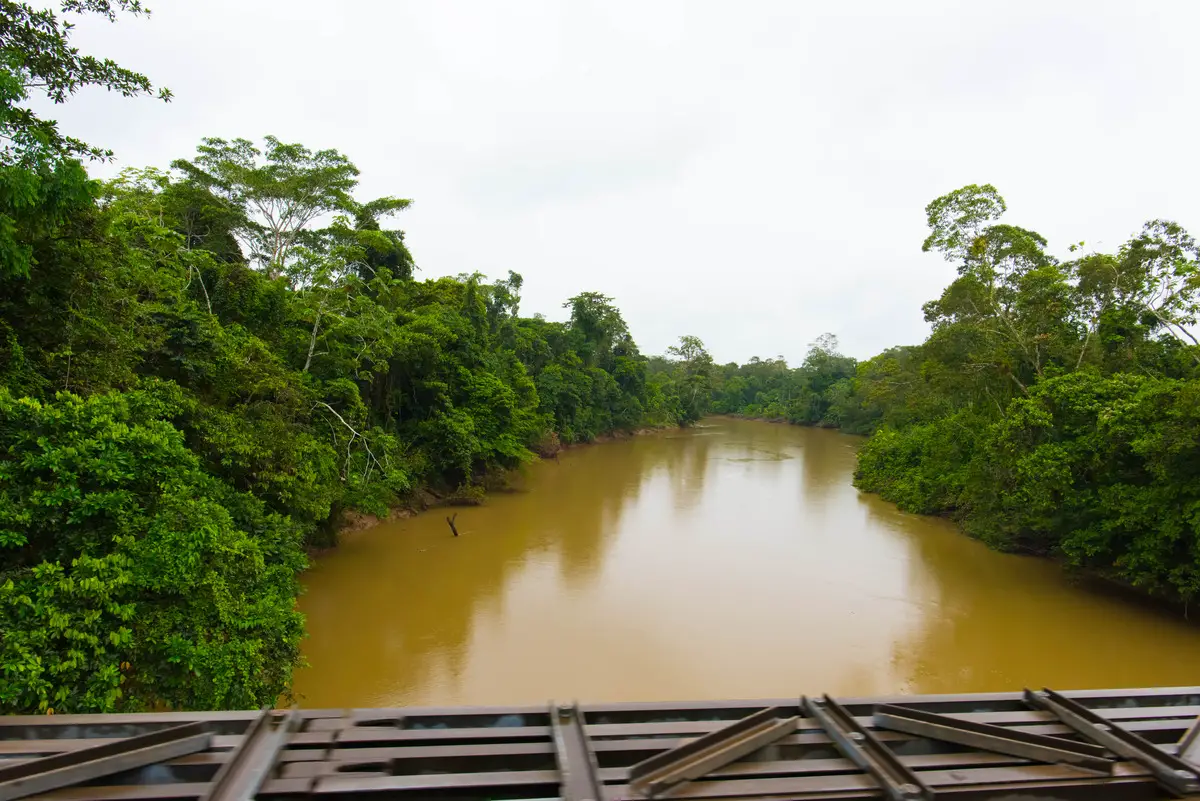Wonder
Ancient Bristlecone Pine Forest
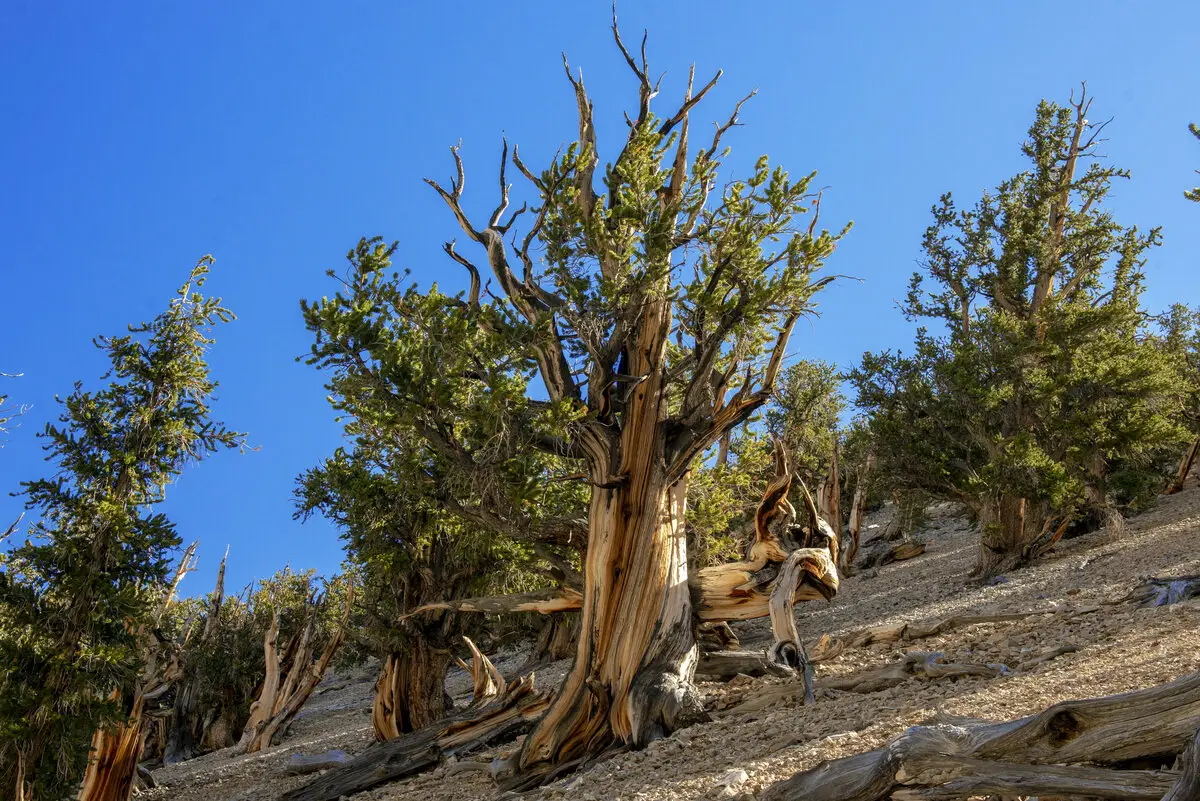
 In short
In short
The best known grove of Great Basin Bristlecone Pine (Pinus longaeva D.K.Bailey) is Ancient Bristlecone Pine Forest. This unique forest contains the oldest known individual trees in the world, including Methuselah tree that is more than 4,750 years old and even older trees.
 50.8%
50.8%
GPS coordinates
Location, address
Map of the site
If you see this after your page is loaded completely, leafletJS files are missing.
 In detail
In detail
There is a unique forest high up in the mountains of California, near Nevada: a forest with the oldest trees in the world.
Ancient Bristlecone Pine Forest is an extreme forest: it grows at the height of some 2.9 – 3.5 km, high above the “normal” forest, in a harsh, dry, cold, and windswept environment.
The soil in this area is dry and deserted, with scarce vegetation. But among the stones rise low, contorted, and amazingly beautiful trees. Photographers and other tourists love to come there to savor the unusual beauty of ancient, twisted trees in the lucid atmosphere of the mountains.
There are two main species of trees in this forest:
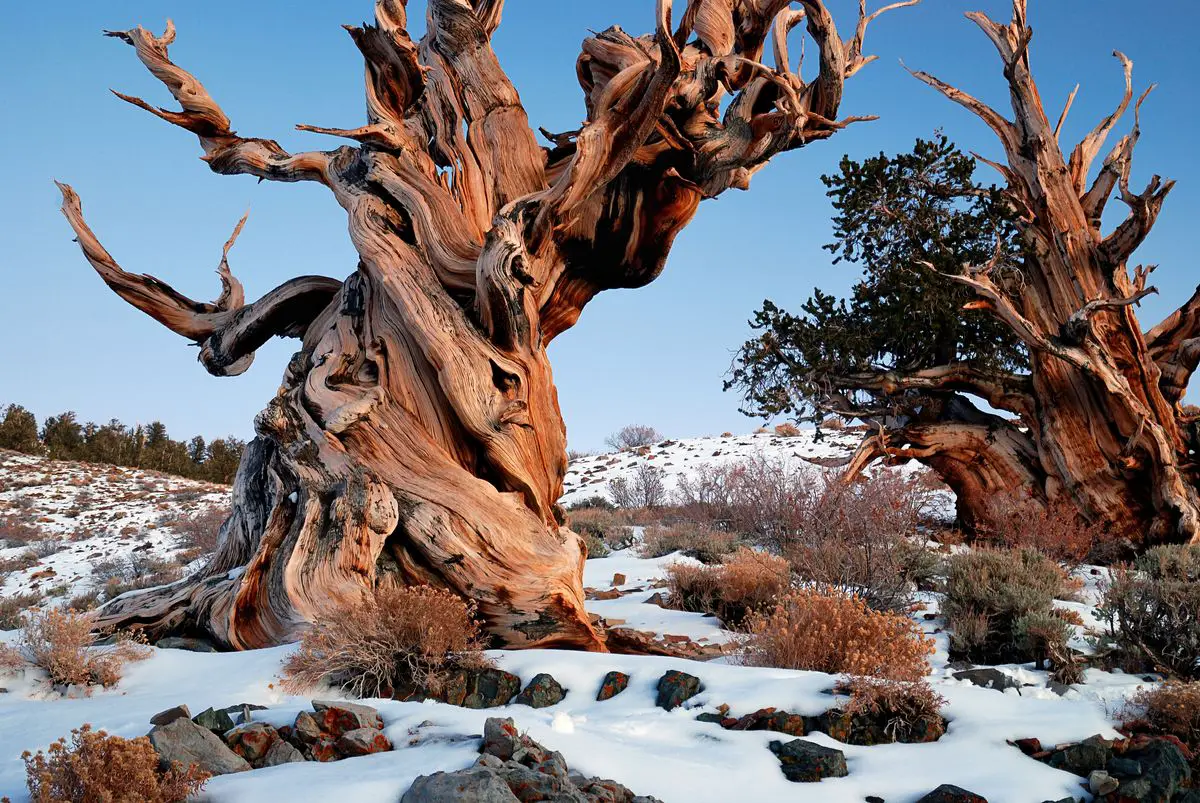
- The best known is Great Basin bristlecone pine (Pinus longaeva). This tree grows in the mountains, at a height of some 2.9 – 3.4 km, and is found only in California, Nevada, and Utah. This is an extreme height for trees. The trees have been “driven” to this location by the gradually changing climate: bristlecone pines “found out” that the harsh conditions high in the mountains are excellent for them because there are no competitors.
- The other pine – limber pine (Pinus flexilis) – also is an impressive and picturesque tree. This pine reaches very old age as well: there was documented an almost 3,000 years old tree in Alberta (Canada). In Ancient Bristlecone Pine Forest, these trees are not that old.
History of the discovery of Ancient Bristlecone Pine Forest
Ancient Bristlecone Pine Forest is a protected area with an area of 113.3 km2. It is located inside a much larger protected area: Inyo National Forest, a true natural wonderland with many unusual and unique natural landmarks.
This remote forest of old, contorted trees caught the attention of scientists in the 1950ies when the Laboratory of Tree-Ring Research at the University of Arizona was searching for old trees. Trees in temperate zones record the weather conditions in tree rings, and these recordings are of great value for climate research. Thus, an older tree provides information about a more distant past. But, not every tree is good for a quality chronological record: trees in lowlands often are recording small-scale events, like local floods, and groundwater level changes. Much better information could be provided by mountain forests.
Step by step dendrochronologist Edmund Schulman and other scientists discovered more and more old trees in the mountains and got rich information about the climate of the last millennia.
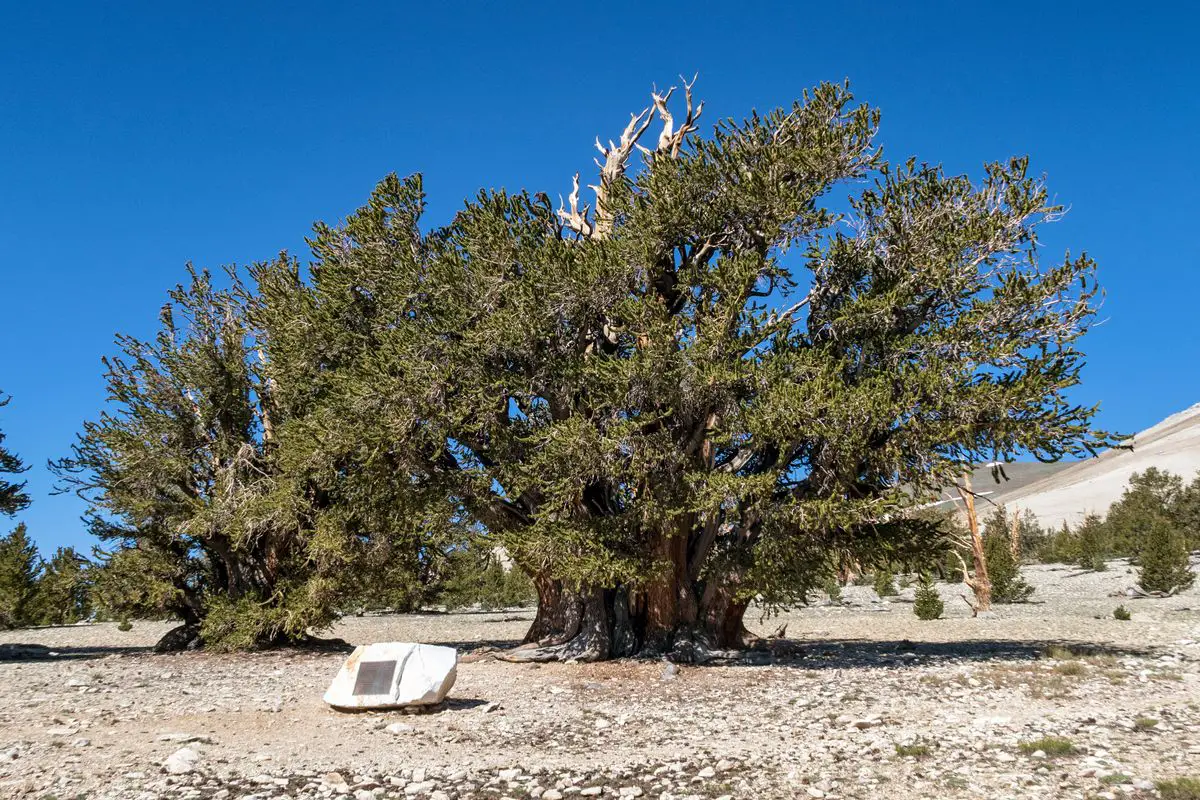
Based on some rumors about visibly old trees in the White Mountains, Schulman and his colleague Frits W. Went in 1953 came to these remote mountains and, upon the direction of a local ranger Alvin Noren, reached a giant bristlecone pine – Patriarch. It was “only” 1500 years old, but scientists noticed many more trees that looked very old.
In 1954 and 1955 Schulman and his assistant C.W.Fergusson returned to this amazing forest and step by step learned where to look for older trees. It turned out that one should not look for the largest pine trees but for the ones that grow in the harshest conditions. Some of the oldest trees had just a narrow strip of live tissue and most of the tree trunk was dead. Nevertheless, such trees still had some green branches: they were alive! The excited scientists found several trees that were more than 4,000 years old! This was a breakthrough for the science of dendrochronology that did not have any reliable data about the time before our era, e.g. birth of Christ.
In 1957 they discovered the oldest known tree in the world: Methuselah tree, which was “born” in 2833 BC! This tree is older than, for example, the Great Sphinx of Giza, the oldest large man-made sculpture in the world.
Schulman, unfortunately, died in 1958, but his discovery immediately became famous worldwide. The Ancient Bristlecone Pine Forest was declared a protected area in 1958.
Which is the oldest tree in the forest?
Of course, Schulman did not research all the thousands of trees in the enormous Ancient Bristlecone Pine Forest. And, most certainly, there are even older trees in the forest.
Thus, in 2009 another dendrochronologist, Tom Harlan, announced that another tree not far from Methuselah had an age of 5,062 years, but, unfortunately, this claim has not been independently confirmed: scientist, unfortunately, deceased in 2013 and the location of the tree was not documented as well as the sample core could not be found.
There are several more Great Basin bristlecone pines that were declared to be older: e.g. Prometheus was more than 4,844 years old in 1964 when it was cut down. This tree was growing elsewhere, in Nevada.
Groves and tourist trails
This unique forest is traditionally divided into smaller parts – groves. Most visitors see Schulman Grove: there are several nature trails and a visitor center (open in summer).
The south-eastern part of Schulman Grove is called also Methuselah Grove. A nature trail, Methuselah Trail, passes the local celebrity: the Methuselah tree. The tree, though, is not marked and its exact location is not disclosed to protect it from possible violations.
Some 16 km north (in a direct line) is the Patriarch Grove. In this part of the forest, in turn, is located the largest bristlecone pine in the world: the above-mentioned Patriarch Tree (approximate circumference: 11.5 m, height: 13.1 m tall). The circumference is measured around the multiple stems of this impressive tree.
References
- Thomas J. Straka, Biographical Portrait, EDMUND P. SCHULMAN, Forest History Today, spring 2008. Accessed on 20th July 2022.
Ancient Bristlecone Pine Forest is included in the following article:
 Linked articles
Linked articles

Wonders of California
Although California is one of the states in the United States of America, Americans often compare it to a separate country, e.g. “if California would be a country, it would have the eighth largest economy in the world”. We can go on with this comparison – California has more landmarks and attractions than many large countries of the world.
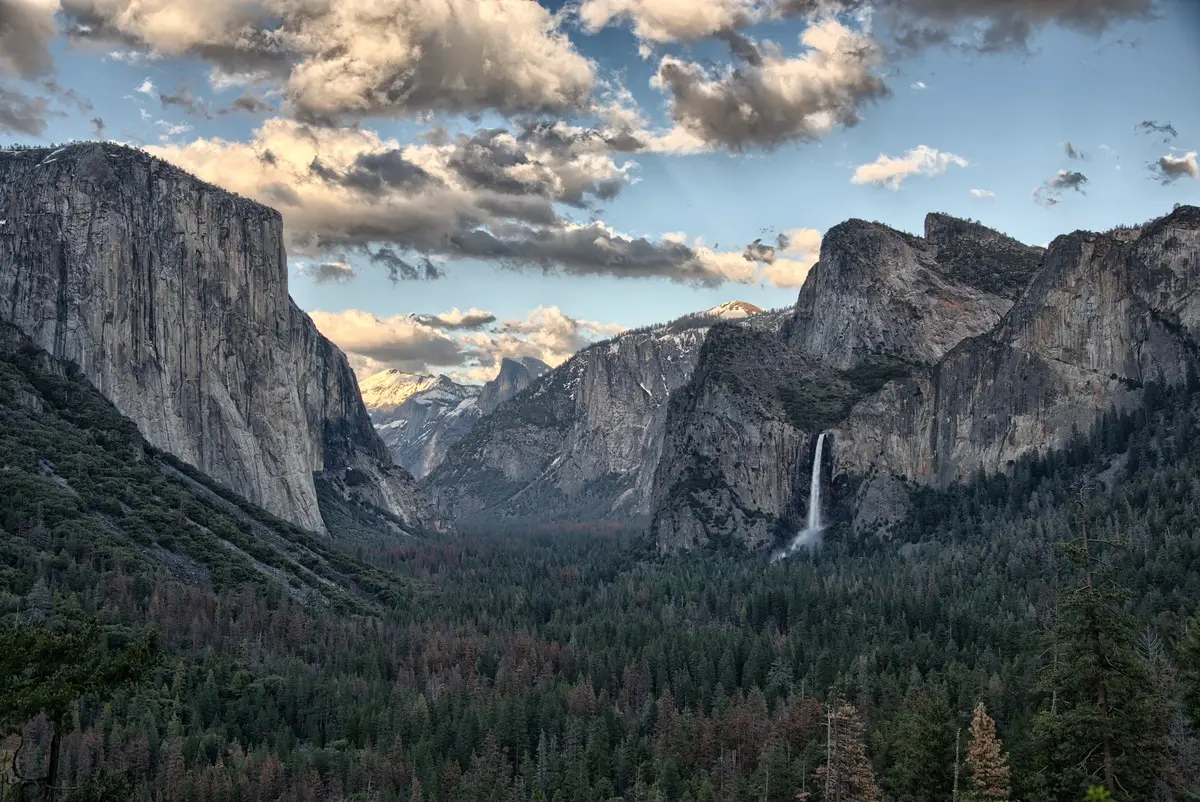
Wonders of the United States
The United States of America is one of the largest countries in the world and offers a wide array of diverse attractions: many are unsurpassed in the world. Highlights of the United States are cliffs, canyons, and rock formations, several impressive downtowns of cities with numerous skyscrapers as well as a rich array of geothermal features, and the giant forest of California.
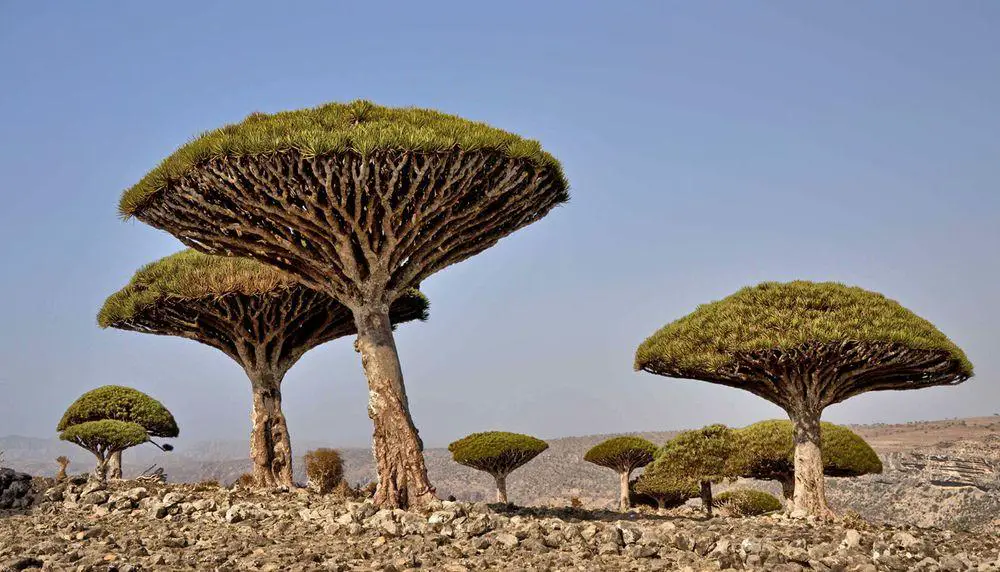
Ecosystems
Biotope is a rather small area with uniform environmental conditions and a specific community of life. Wondermondo describes biotopes and ecosystems which have striking looks, look very beautiful, or have other unusual characteristics.
 Recommended books
Recommended books
Bristlecone Book: A Natural History of the World’s Oldest Trees
High among the cold, windswept peaks of America’s mountain West, strange and beautiful trees grow old but never age. The Bristlecone book: A Natural History of the World’s Oldest Trees brings together for the first time the captivating facts about bristlecone and foxtail pines trees that thrive in a harsh environment and live thousands of years with a particular focus on Great Basin Bristlecone pine, the oldest tree species on earth.
The Secret Life of Ancient Bristlecone Pines: Book One of the Secret Life Series
Whether you are an armchair enthusiast or an experienced explorer, The Secret Life of Ancient Bristlecone Pines— Book One (third edition) provides remarkable insight into exceptional ancient trees that are scattered across an unrelenting landscape striking bold poses with their jagged limbs outstretched extending skyward. By blending elements of natural history, geology, and meteorology, a portrait emerges to reveal how the nature of things works in order for an extraordinary type of pine tree to live for thousands of years.

